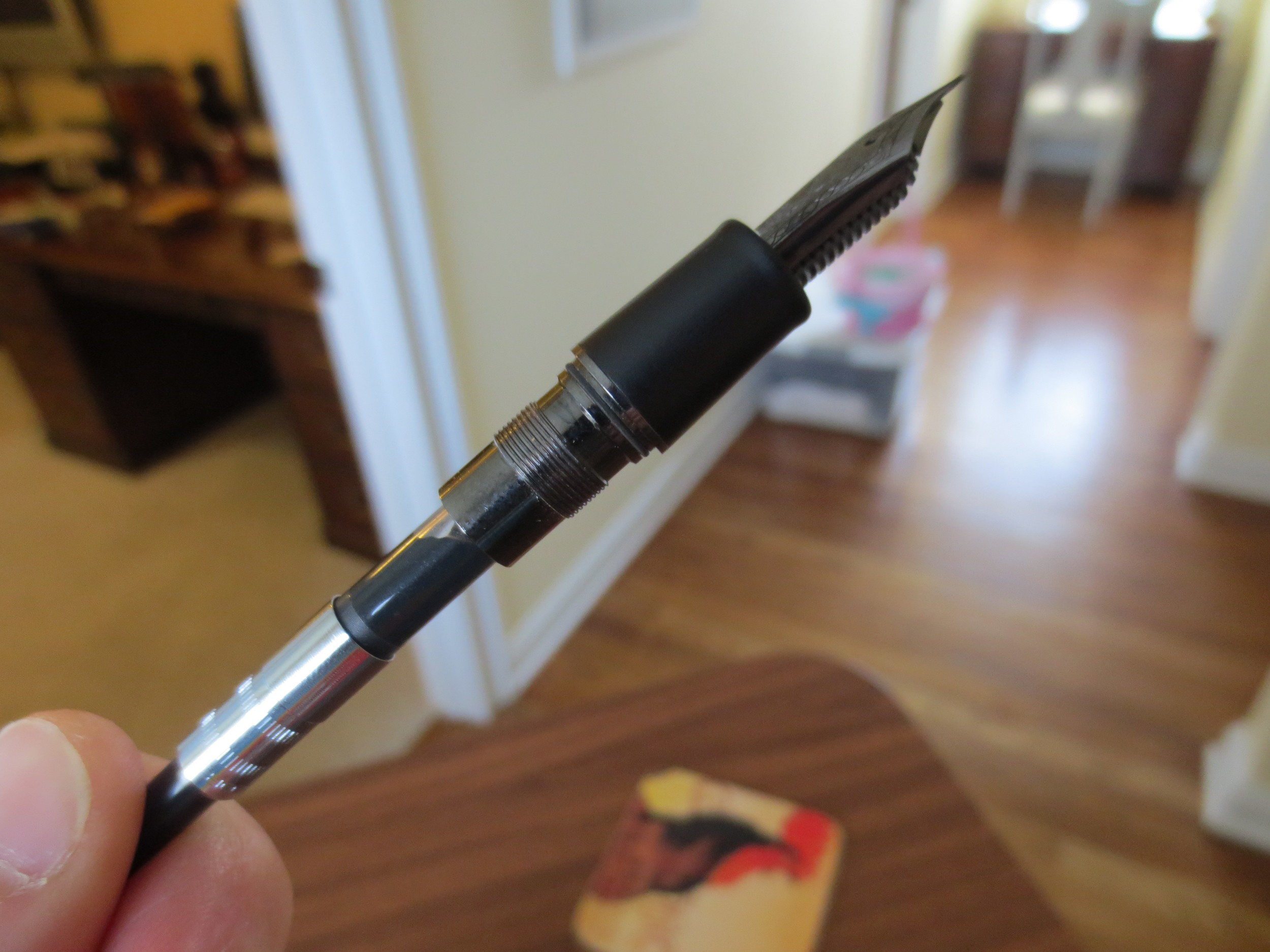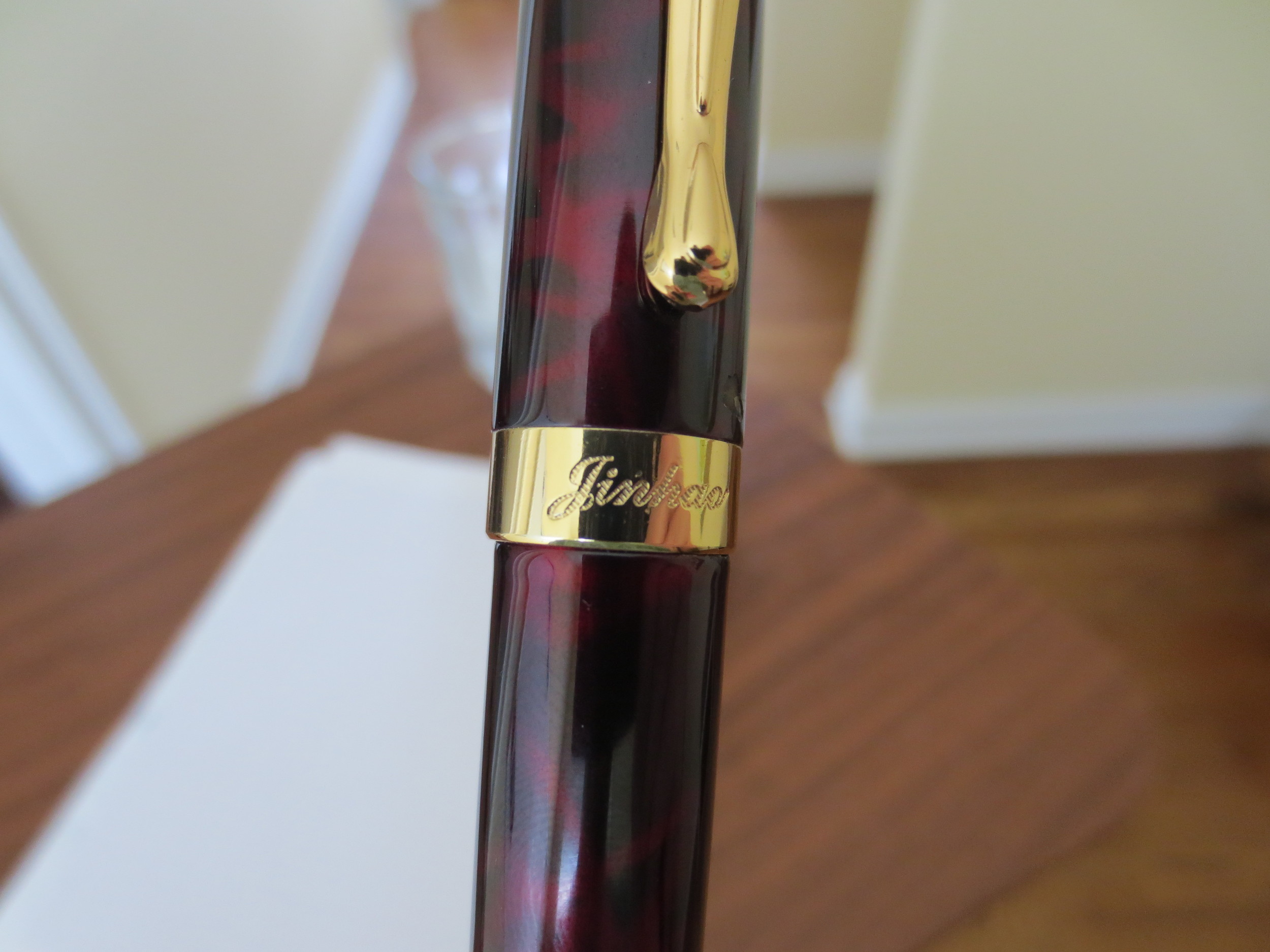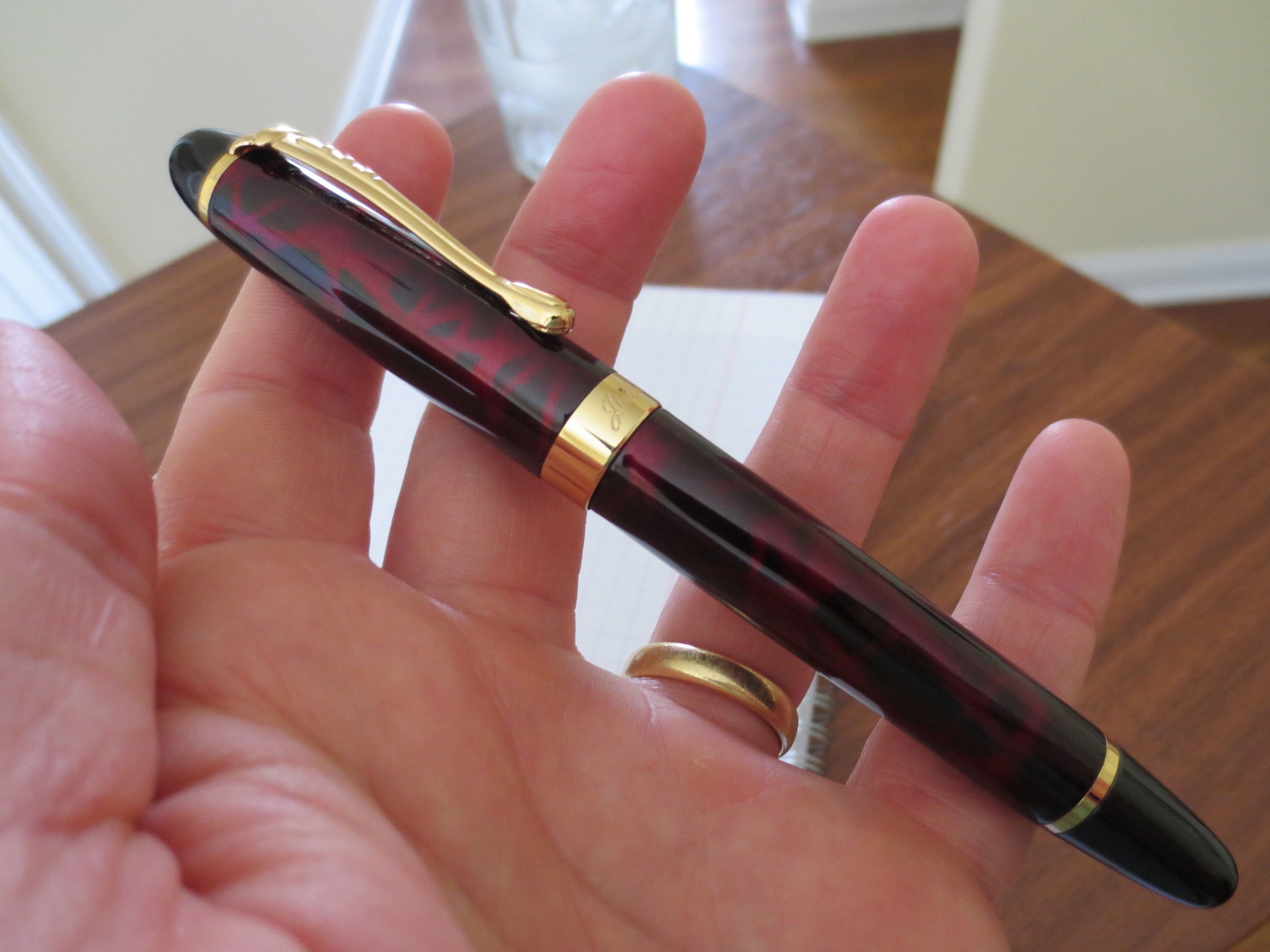One of my personal favorites, that until recently was always inked and used on a daily basis, is the Sailor Professional Gear Imperial Black Edition. Following a close call (and near total tragedy), my Imperial Black recently rejoined the rest of my collection thanks to Mr. Mike Masuyama, but more on that later.
Aesthetically, this is one of the most beautiful pens that I own. Sailor nailed it on the design. I love the flat top cap and base, and the dark trim sets off the matte black color.
I won this pen approximately a year ago in an eBay auction held by a Japanese eBay seller, and by sacrificing quick shipping and the U.S. display box option, I saved a little bit of money. This pen has special meaning to me because I received it in the mail the day my daughter was born, and was carrying it and using it (with permanent Kiwa Guro pigmented ink, of course) to sign paperwork our entire first weekend with her. Thus, you have my answer to that eternal question: What pen would you use to sign your child's birth certificate? (For me, it's not the Visionnaire. I will give Morgan and his team credit, though. They nailed the packaging on their product, as opposed to the hideous faux crushed velvet brown box in which this pen arrived.)
If Elvis had purchased a pen in 1973 (which I'm sure he did), it probably would have come in a box like this.
All joking aside, I knew from the eBay listing that this product was not coming to me in its original packaging (in order to save on shipping), so needless to say I wasn't expecting much in that regard. This was my first Sailor pen, and what I was looking for here was one of Sailor's excellent nibs in a matte black pen with dark trim. Apparently, Sailor uses Titanium ion plating to darken their trim, as opposed to Ruthenium. Either way, I like the way this pen looks.
Close-up of the titanium ionized trim. My completely non-scientific survey of the pen industry revealed that Ruthenium is more commonly used in "stealth trim" than other metals, so Sailor's process may be unique? Don't take my word for it--it's entirely speculation, and it doesn't really matter. Both look great.
I opted for the fine nib, which is equivalent to a western extra fine or narrower. Despite the fact that it is 21k gold, the nib is not "soft." In fact, it's a fairly stiff nib that lays a very fine line. For example, the Sailor "fine" lays down a line of ink approximately one-half the width of my Pelikan M600 with an extra fine nib. This is perfect for my needs, since I spend the majority of time at my day job editing others' written work product and scrawling marginalia.
A writing sample is included below. The ink used is Sailor's Kiwa Guro nano-black. As you can see from the photos, I'm working up a review of that as well.
Nib Close-Up. The tip is so fine that I had a hard time getting my camera to focus on it. My photography skills need work. Anyway, take a look at the classy scrollwork on the nib. Tastefully done, in my opinion, with Sailor's iconic anchor symbol.
Close-up image of the writing: Note the very tight lines. Paper is Field Notes Shelterwood edition.
The Good:
Sailor nibs are amazing. Although I had the nib tweaked to perfection by Mike Masuyama (who I believe used to work for Sailor), the nib wrote extremely well out of the box and I used it for several months before having it slightly tuned at the D.C. Pen Show.
Weight: The pen is very light and fits nicely in the hand. You can use this pen for long writing sessions without your hand becoming tired.
Looks: I love Matte black "stealth" pens, even though they are on the verge of becoming played out with every pen company trying to bring out a stealth model.
The Cons:
Weight: The pen is very light and can fly out of your hand if it becomes sweaty. As I alluded to above, this happened to me once, and a slight drop of four inches onto my desk bent the 21K nib nearly in half. Regardless of how stiff the nib writes, 21K gold is a soft material, and bends easily. I managed to straighten it somewhat myself, but I had to send it to Mike Masuyama to restore the ink flow to a proper level. Of course, it's now as good as new, but I'm much more careful with this pen.
Size: If you don't post your pens, the Sailor Pro Gear model might be too small for you. I have to post this pen in order for it to write comfortably, but I post nearly every pen I own and don't have a problem with doing so.
Sailor pens take proprietary cartridges and a proprietary converter. It is what it is.
The Overall Verdict. this is one of the best, if not the best, writing pens in my collection. The nib is superb. That the pen also looks great is a bonus. It's hardly ever out of rotation, and even then it's only to make sure that other pens in my collection get regular use. There are multiple buying options for this pen, and as I mentioned in the review I purchased directly from a Japanese seller, since for whatever reason Sailor has elected to price this pen at nearly double the Japanese price in the U.S. market.





















